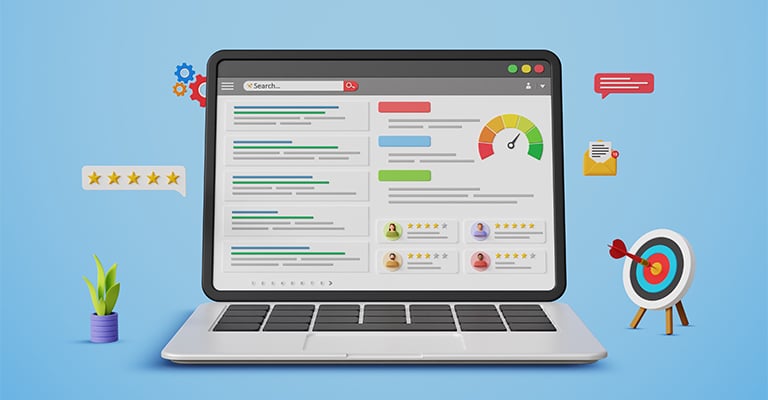Think of your website like a vast library and search engines (like Google) as helpful librarians. These librarians must look at every book to let people know what’s available. However, sometimes, they can’t find or access certain books or sections within the library. When this happens, people searching for those books won’t know they exist! That’s precisely what happens with SEO crawl errors – they stop search engines from finding your website’s pages. When search engines can’t find your pages, people searching for what you offer won’t find you or your content.
This guide explores these errors, why you should care about them, and how to fix them. You’ll learn practical ways to make sure search engines can find all your content!
Understanding SEO Crawl Errors

What Are SEO Crawl Errors?
Crawl errors are one of the most common technical SEO issues. They occur when search engines try to look at your website but run into problems. It’s like if someone tried to visit your house but couldn’t get there because:
- The address was wrong
- The road was blocked
- Your door was locked
Why Do SEO Crawl Errors Matter?
Search engines need to look at (or “crawl”) your pages to understand what they’re about. If they can’t do this, they won’t show your pages to people searching online. It’s like having an amazing store that nobody can find – it doesn’t matter how great your stuff is if no one knows it’s there!
Common Types of SEO Crawl Errors
404 Errors (Page Not Found)
This happens when someone tries to visit a page that no longer exists. It’s like going to a store that moved locations without leaving a note about where they went.
Server Errors (5XX)
These happen when your website’s computer (server) has problems, like:
- Taking too long to respond
- Being too busy
- Having technical problems
Think of it like calling a store but nobody answers the phone, or the line is busy.
DNS Errors
DNS is like your website’s address book. These errors happen when your websites’:
- Address is written wrong
- Hosting service is down
- Security certificate expired
Robots.txt Errors
Your robots.txt file tells search engines which parts of your website you want indexed. Sometimes this file accidentally tells them to stay away from important pages!
How SEO Crawl Errors Hurt Your Website

Search Rankings
When search engines can’t see your content, they can’t tell people about it. This means fewer people will find your website through Google. Here’s what happens:
Dropping Off Google’s First Page
Think of Google’s first page like the front window of a store. If crawl errors stop Google from seeing your content, it’s like taking your products out of the window display. Studies show that 75% of people never look past the first page of Google!
Lost Keyword Rankings
Let’s say you sell handmade soap. If Google can’t crawl your soap-making pages because of errors, your website won’t show up when people search for “handmade soap” or “natural soap.” Your competitors will get those visitors instead.
Wasted Content Efforts
You might write amazing blog posts or create great product pages, but if crawl errors block them, it’s like putting up billboards in a forest where nobody goes.
Visitor Experience
The same problems that bug search engines also annoy users, too. Here’s how:
Frustrating Dead Ends
Imagine walking into a store and finding locked doors everywhere you go. That’s what happens when visitors hit pages with crawl errors. They get error messages instead of the content they want.
Slow Loading Times
Server errors that cause crawl problems also make your pages load slowly. It’s like being stuck in a slow checkout line – people get impatient and leave. Research shows that 40% of visitors leave a website that takes more than 3 seconds to load!
Broken Customer Journeys
When crawl errors break links between pages, it’s like removing signs in a store. Visitors can’t find their way to:
- Product pages
- Shopping carts
- Contact forms
- Help sections
Website Trust
Lots of errors tell search engines your website isn’t well taken care of. Here’s why this matters:
Lower Domain Authority
Think of domain authority like your website’s reputation score. Crawl errors lower this score, making it harder to rank well in search results. It’s like having a low credit score – everything becomes more difficult.
Bad First Impressions
When visitors hit error pages, they might think:
- Your business is no longer operating
- You don’t care about website quality
- Your site might not be safe to use
Lost Business Opportunities
Bad impressions lead to lost trust, which means:
- Fewer people subscribing to newsletters
- Lower conversion rates on sales
- Fewer return visitors
- Bad word-of-mouth recommendations
Lost Revenue
Crawl errors directly affect your bottom line in several ways:
Missed Sales Opportunities
If search engines can’t crawl your product pages, potential customers can’t find them. Every crawl error could mean a lost sale.
Higher Marketing Costs
When your organic (free) traffic drops due to crawl errors, you might need to spend more on paid advertising to make up for it. It’s like having to pay for billboards because your store’s sign is broken.
Wasted Resources
Time and money spent creating content that search engines can’t see is wasted. It’s like printing flyers but never handing them out.
Tools to Find SEO Crawl Errors

Google Search Console
This is Google’s free tool that acts like a report card for your website. It’s the most important tool because it shows you exactly what Google sees when it looks at your site.
Key Features
- Coverage Report: Shows which pages Google can and can’t see
- Mobile Usability: Tells you if your site works well on phones
- Security Issues: Warns you about any safety problems
- Performance Data: Shows how often your site appears in searches
Important Reports
Index Coverage Report
- Shows pages that Google can’t read
- Lists why certain pages are blocked
- Helps you track fixing problems
URL Inspection Tool
- Helps you check specific pages
- Shows how Google sees your page
- Helps you find mobile viewing issues
Sitemaps Report
- Shows if Google can read your site’s map
- Tells you when pages were last checked
- Highlights any mapping problems
Screaming Frog SEO Spider
Think of Screaming Frog as a robot that crawls through your website like Google does. The free version lets you check up to 500 pages.
What It Shows You:
- Broken links on your site
- Pages missing important titles
- Pictures without descriptions
- Problems with your site’s structure
- Duplicate content issues
How to Use It:
- Download the free version
- Type in your website address
- Let it check all your pages
- Look at the problems it finds
Ahrefs Webmaster Tools
This free tool helps you find and fix website problems. It’s like having a mechanic check your car regularly.
Main Features:
- Health score for your website
- List of broken links
- Missing page titles
- Duplicate content warnings
- Security issue alerts
Best Uses:
- Weekly site checkups
- Finding broken links
- Checking site speed
- Finding missing content
SEMrush Site Audit
While the full version costs money, they offer a free account that lets you check basic site health.
What You Get Free:
- Basic site health score
- Top 10 site problems
- Basic crawl reports
- Simple fix suggestions
Special Features:
- Checks loading speed
- Finds coding problems
- Shows mobile issues
- Highlights security concerns
Built-in Browser Tools
Browser Inspection Tools
Every modern web browser (like Chrome, Firefox, or Edge) has built-in tools to help you find problems:
Chrome DevTools
- Press F12 to open
- Shows loading errors
- Checks mobile view
- Tests page speed
Firefox Developer Tools
- Shows network errors
- Checks security issues
- Tests how pages load
- Finds console errors
How Often to Use These Tools
Daily Checks
- Look at Google Search Console for new errors
- Check your site’s important pages
- Watch for sudden traffic drops
Weekly Tasks
- Run a basic site scan with Screaming Frog
- Check your site’s health score
- Look for new broken links
Monthly Reviews
- Full site audit with your chosen tools
- Detailed error analysis
- Check all site features
- Update your site’s map
Making the Most of These Tools
Create a Checking Schedule
- Make a list of what to check daily
- Set up weekly scanning times
- Plan monthly deep dives
- Keep track of what you find
Prioritize Your Fixes
- Fix errors on main pages first
- Address security issues quickly
- Work on speed problems
- Fix broken links when found
Keep Records
- Save reports each month
- Track fixed problems
- Note recurring issues
- Document your fixes
How to Fix SEO Crawl Errors

Step 1: Check Often
Look for problems weekly or monthly using Google Search Console. Keep a list of what you find and what you fix.
Step 2: Fix the Important Stuff First
Focus on errors that:
- Affect your main pages
- Make it hard for visitors to use your site
- Show up a lot
- Affect pages where people buy stuff
Step 3: Common Solutions
For 404 Errors (Missing Pages)
- Point old links to new pages
- Bring back pages you didn’t mean to delete
- Fix links that point to missing pages
For Server Errors
- Make sure your website’s server isn’t overworked
- Fix slow or broken parts of your website
- Have a plan in place for when things go wrong
For DNS Problems
- Check your website’s address settings
- Make sure your security certificate works
- Check if your hosting service is working
Preventing Future SEO Crawl Errors
Regular Checkups
- Look for problems every month
- Keep your website’s software updated
- Make sure everything’s running smoothly
Content Organization
- Keep your website organized
- Connect your pages together properly
- Keep track of all your content
Technical Tips
- Have a map of your website for search engines
- Tell search engines which pages to look at
- Fix broken links properly
Best Ways to Help Search Engines

Make the Most of Search Engine Visits
Search engines can only look at so many pages each day. Help them by:
- Getting rid of duplicate content
- Fixing chains of redirects
- Telling them which pages to skip
Make Your Site Fast
Fast websites are easier for search engines to check. Speed up your site by:
- Making pictures smaller
- Cleaning up code
- Using computer memory smartly
Make Your Site Work on Phones
Since most people use phones to browse, make sure your site:
- Looks good on all devices
- Loads quickly on phones
- Is easy to use on small screens
Technical Setup
Clear Web Addresses
- Use addresses that make sense
- Keep them consistent
- Avoid confusing stuff in links
Proper Response Codes
- Tell browsers the right information
- Point old pages to new ones correctly
- Handle errors nicely
Keep Your Site Map Updated
- List all your important pages
- Remove pages you don’t want found
- Share it with Google
Conclusion
Crawl errors might sound super technical, but they’re just problems that stop search engines from finding your content. By checking for these problems regularly and fixing them, you make sure people can find your website when they search online.
Remember that keeping your website healthy is something you need to do constantly, not just once. Stay on top of problems, and you’ll see more visitors coming to your site from search engines. You should focus on the basics at first: set up tools to find problems, check your site regularly, and fix issues when you discover them. As you get better at this, you can try more advanced stuff to make it easier for search engines to find your site!




